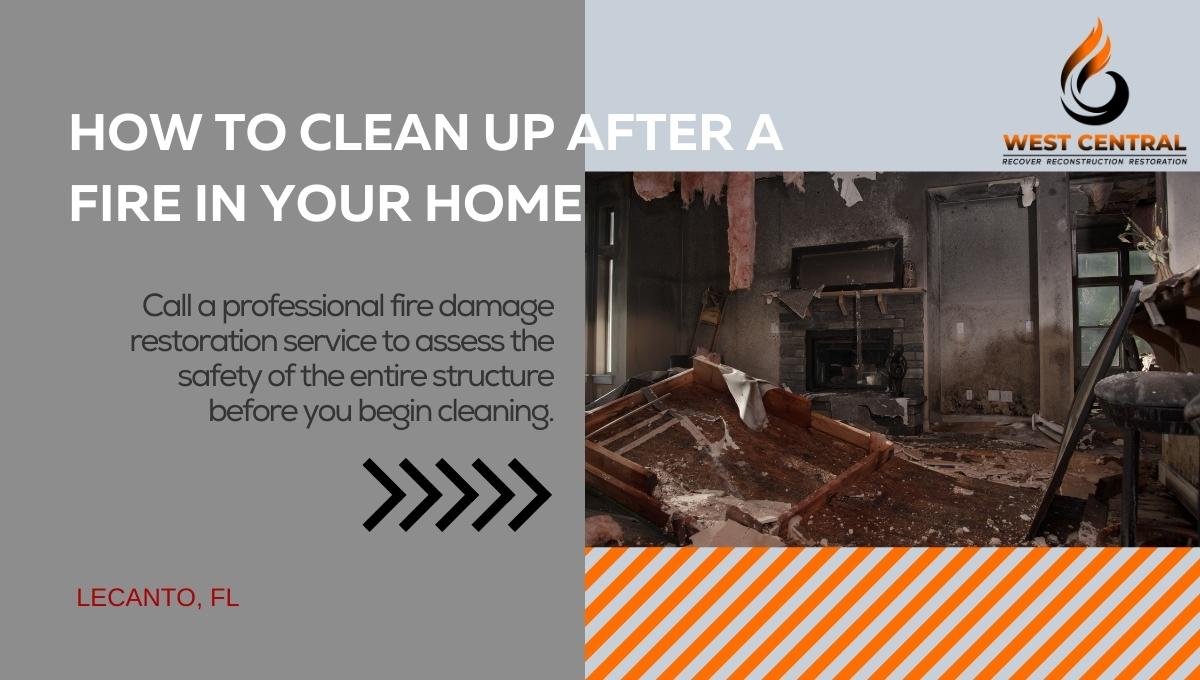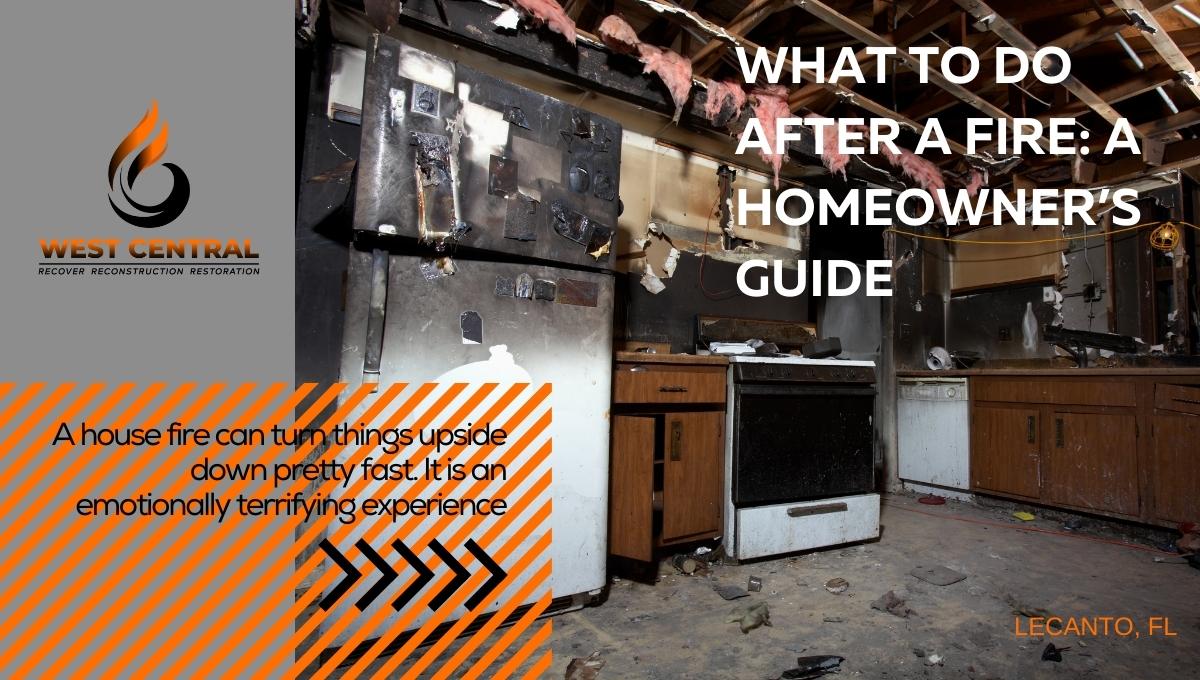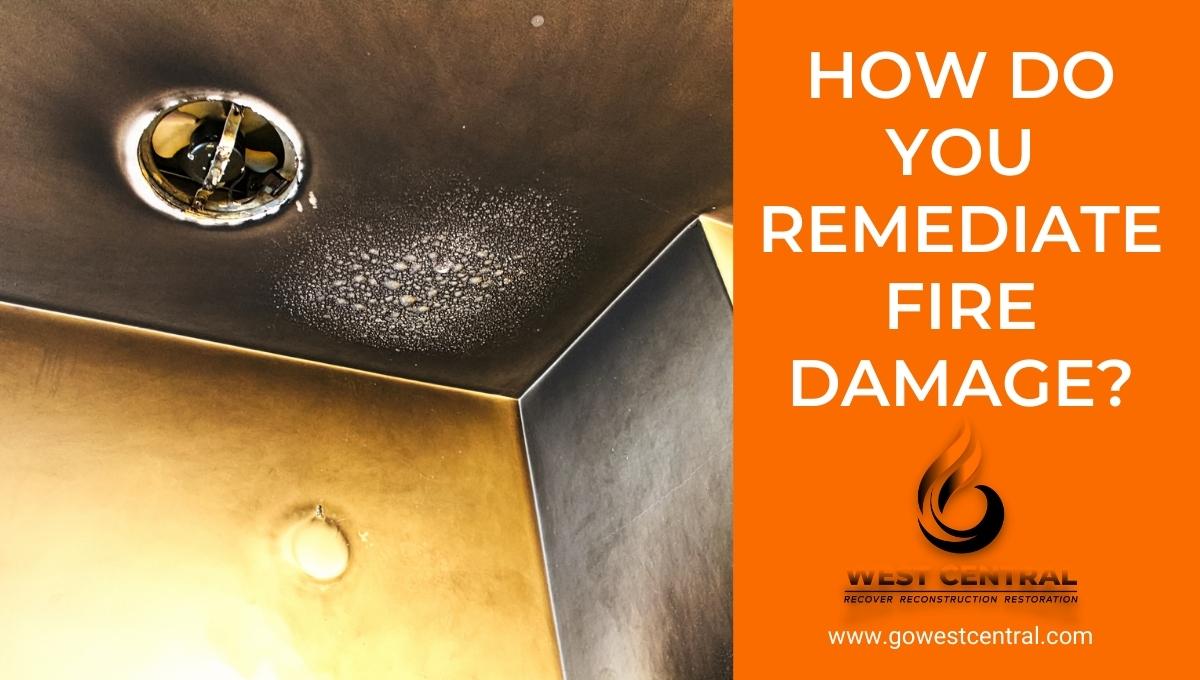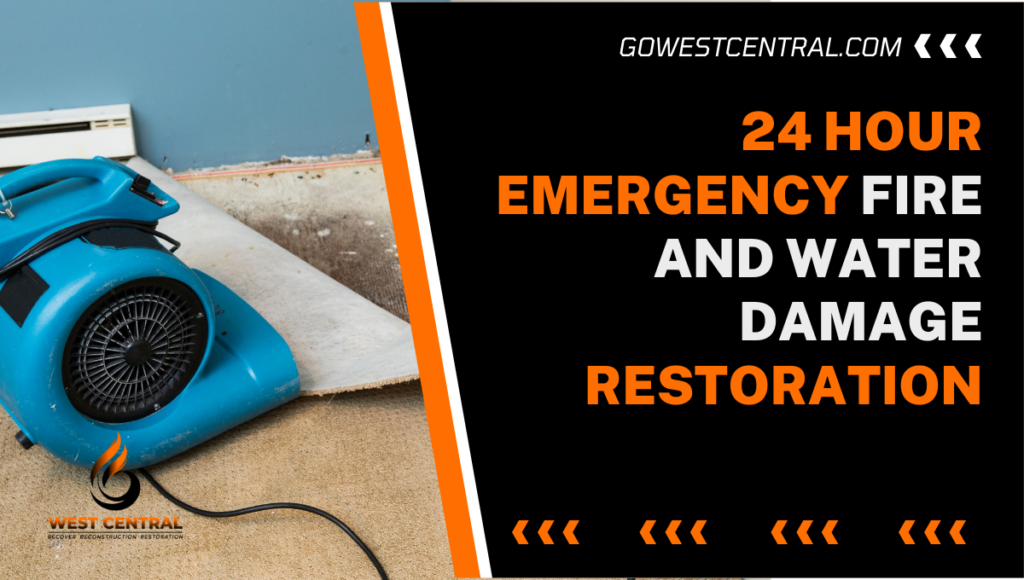
A fire is one of the most devastating damages that can strike your home. Though it is not too common, it can occur unexpectedly in any house and wreck untold damage. And the fire damage can spread even to rooms that aren’t reached by the flames.
The three types of common fire-related damages are:
- Damages due to flames.
- Damages due to smoke.
- Damages caused by substances and in the act of extinguishing the fire.
In the unfortunate situation of a fire in your home—and after the fire has been extinguished—one of the first tasks you should undertake is to assess the magnitude of damage and what items have been lost in the fire.
You should also speak with your insurance company, find out what is covered, and document the damages comprehensively for commensurate compensation.
So how do you check your home after a fire?
1) Begin by assessing structural damages
The first check you make after a fire is on the structure of the building. Before you or anyone else can re-enter the house, confirm that its foundation and overall structure is safe.
Do a walk-through to check for cracks in the foundation, damage to power lines, sagging of the ceiling, and breaks in the floor.
And if there are structural damages, have a professional secure the building before any fire damage restoration work begins.
Structural damages are checked in two stages: assessing the exterior, and then examining the interior of the home for damages.
How do you check for damages on the exterior?
Inspect the area around the building before entering it.
Look for damaged gas lines, loose power lines, missing support beams, or foundation cracks.
If you find any of these damages outside, it indicates a serious problem inside.
In that case, have the home checked by a building contractor or inspector before entering it.
Assess the door’s position.
Don’t force your way through if the door is jammed—it could be supporting the rest of the building. So find an alternative route in.
Sniff for gas.
Don’t move in if there is smell of natural gas or propane, or if you hear a hissing noise.
Instead, leave the property right away and have the fire department check the situation inside.
If you use a propane tank, turnoff all its valves. Then contact the supplier to check it before you can use it again.
If the locks are damaged, take them apart and wipe them with oil.
For locks that can’t be removed, squirt machine oil through a keyhole or bolt opening, then distribute the oil by working the knob. Also clean and oil the hinges.
How do you check for damages on the interior?
Be on the lookout for animals like snakes, rodents, spiders, and insects that might have entered your home while you were away.
Tap loudly and repeatedly on the floor with a stick as soon as you are inside so they know you’re back.
Various objects inside your home may be damaged and unstable. So handle them with caution and avoid leaning against, pushing, or holding furniture, stairs, and damaged parts of your building.
A sagging ceiling is probably wet, heavy, and dangerous. So you need to bring it down as it will have to be replaced.
Wear a hard hat and eye protection and use a long stick to knock it down, making sure to stand a suitable distance away from the damaged area.
With the stick, poke holes in the ceiling starting with the bulge. This will let the water drain out slowly.
Avoid striking the center of the damaged area as the ceiling may collapse all at once.
Don’t walk through a sagging floor as it can collapse under your weight.
Instead, use thick strong boards or thick plywood panels to bridge the sagging sections.
Boards that can extend by at least 8-12 inches on each side of the sagging area are ideal.
When a fire occurs during dry weather, open the doors and windows to allow air in and to dry and ventilate your home.
The interior may be dark if power is out, but don’t use any open flame, including candles. Use a flashlight instead as you inspect the damage.
Disconnect and check all appliances for damages before you can use them.
Perform temporary repairs like bracing walls, covering holes, and removing debris. Keep all the receipts.
Document the damage using videos, pictures, and notes. You will need to substantiate your insurance claims later.
2) Next, check for damages on utilities and major systems
For the telephone, check if it is still on the hook and hang up any phones that aren’t.
Pick up one phone, and then listen for a dial tone to find out if you still have a working telephone service.
If there is no dial tone, unplug all the phones and plug in one at a time to listen to the dial tone. This will indicate whether the telephone itself is broken or your service is fully out.
If the service is out, call the telephone company to report the issue and request for a repair.
Turn off electricity from the main fuse box or circuit breaker if you see sparks, frayed wires, or smell of hot insulation.
If there is a pool of water on the floor between you and the main fuse or circuit breaker, don’t step on the water as you try to reach the circuit breaker or main fuse.
Instead, use a dry wooden stick to reach and turn off electricity at the circuit breaker or main fuse.
If it is impossible for you to reach the fuse or circuit breaker, call a competent electrician to assist.
The panel box may have breakers that have tripped. So check for tripped breakers in the box.
Tripped breakers may indicate damaged wiring inside your home. But don’t try turning them on. Instead, call an electrician.
Inspect fuses using a flashlight.
Replace broken fuses with those of the same amperage rating. And avoid using an object like a strip of metal or coin to bypass the protection that the fuses offer.
If there are damaged water pipes, turn off the water supply at the main valve.
And if there is damage in the sewage lines, stop using the toilets, showers, and sinks. Call a plumber to fix the water, sewage, or drainage issues.
If you’ve been using a heating oil tank system, turn off all its valves. Then, call a professional skilled in its maintenance to check it before you can use it again.
3) Now, check the state of your household items
- Handle household items safely and avoid mixing them. Items such as cleaning products may cause toxic fumes and other hazards if mixed.
- For spillages of chemicals that don’t pose health risks, wear rubber gloves and use rags to clean up the spillage. Discard spilled chemicals.
- Throw away beverages, medicine, and food exposed to smoke, soot, or heat. If food that was in the freezer still has ice crystals, you can use it. If it doesn’t, then discard.
- Examine your family keepsakes to determine what is salvageable. Then, organize and separate your possessions into piles to see what you need to submit to the insurance company for compensation.
- Open doors and windows, if possible, so that everything can dry out from the water used by the fire department.
4) Lastly, clean up your home
- Use soap and warm water to remove soot from the ceilings and walls. Allow them to dry completely before repainting.
- Add bleach in with your clothes to remove the smell of smoke.
- Wash all your kitchen items to prevent possible illness due to the smoke.
- Keep lists of everything that was damaged so you can submit to your insurance company for reimbursement.
Are you dealing with fire damage and need help? Would you like to work with a reputable fire damage restoration company that can be by your side in the event of a fire?
At West Central Equipment and Restoration, we have a skilled, experienced team of fire damage restoration technicians that will help you with every fire situation, big or small.
Call us today for help with fire, smoke, and soot damage. For more information on fire damage restoration, visit the site “West Central Equipment and Restoration.”




 A fire outbreak in your property carries with it a huge destructive power. In a matter of minutes, it can burn up all your possessions. And in most cases, you will have to throw away quite a number of items that are irrecoverably damaged.
A fire outbreak in your property carries with it a huge destructive power. In a matter of minutes, it can burn up all your possessions. And in most cases, you will have to throw away quite a number of items that are irrecoverably damaged.




